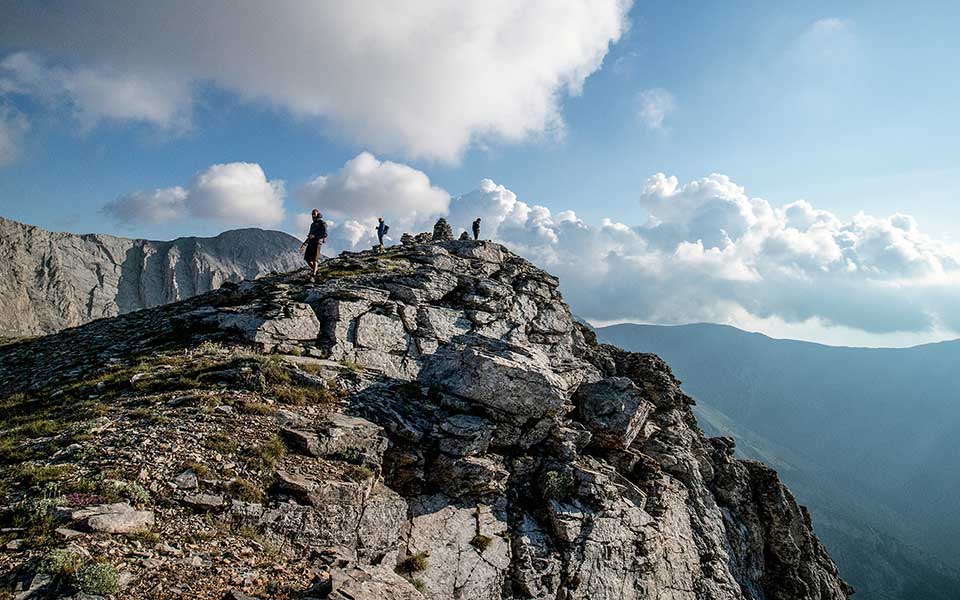The world may know it as the epicenter of an entire religion and of the ancient Greek world, but today Olympus is, above all, a spectacular mountain that begs to be explored.
Rising to 2918 meters at its summit, it is the second-tallest mountain in the Balkans. An important part of its attraction for nature buffs is its proximity to the sea and to the islands of the northern Aegean, along with its diversity of flora and fauna and its exceptionally beautiful landscapes.
There are many ways to reach Mytikas, its highest peak. For those driving up from the coast towards the village of Litochoro, the gash of the Enipeas Gorge is unmissable; its upper edges rise to an elevation of 2500m and to the rocks of Mytikas.
The E4 trail runs through here, passing a river, waterfalls and dense woodland before reaching the wellspring of Prionia: a trek of some three to four hours. There’s a hut at the end of the trail where you can get some food and water, and take a much needed rest before the next leg to the top.
It takes another three hours or so, through a cool forest of beeches and, higher up, coarse Heldreich’s pines (which grow at 2000m and above), to reach the refuge of Spilios Agapitos at 2060m. You can get your strength back for the next day’s final push at this old, yet very comfortable and well-run refuge.
The trail to Skolio, at 2911m, is a two-hour hike along a rather unforgiving exposed stretch of rock and pebbles. From there, Mytikas is a precipitous ascent of around an hour or so, along a path carved by the first people to conquer Olympus in 1913, forever dethroning Zeus.
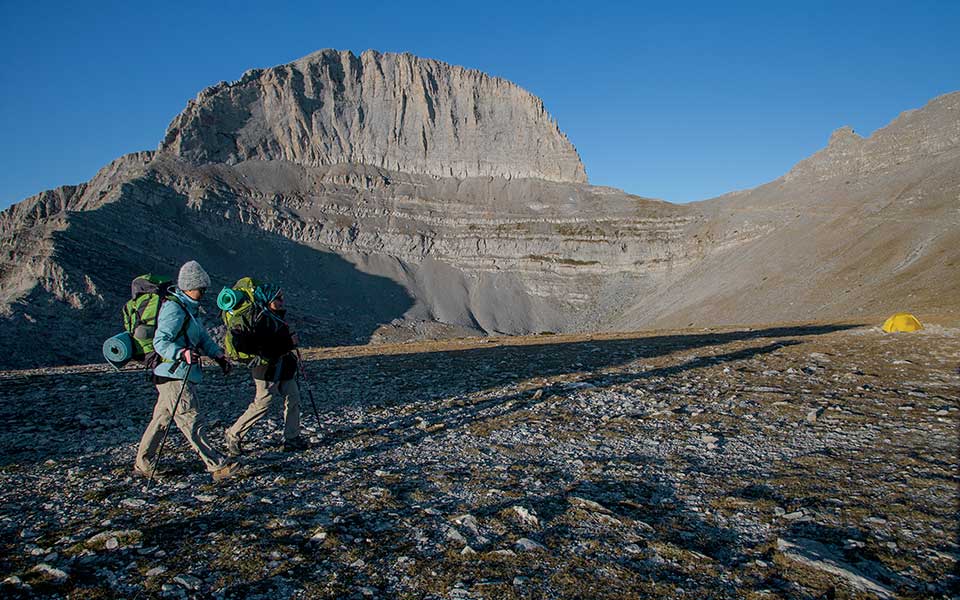
© Olga Charami
Another way up Olympus from Litochoro is through the Plateau of the Muses, with the trail starting at 1200m at a spot called Gortsia, which can be reached by car. It’s a two-hour hike from there through dense woodland to the Petrostrouga Refuge, known for its marvelous views of the sea.
The trail then heads up to the Skourta summit at 2460m. Continuing along the excellent path – with drops on either side of up to 1000m – will take you to a ridge and then up to the plateau. What a sight! The peak known as Stefani, or “Crown,” is exactly like the back of a giant throne, earning the spot the nickname “The Throne of Zeus” from the first climbers to scale the mountain.
At 2909m, it is Olympus’ third-highest summit, and the steepest of all.
It was this “throne,” which catches the colors of the setting sun, that captured the attention of Italian interwar mountaineering legend Emilio Comici in 1936. Comici and his climbing partner and wife Anna Escher were responsible for establishing the first proper climbing routes on Greece’s mountains. One of these has been named after them and is considered an easy (AD+) but classic route.
Since 1936, however, dozens of new routes have been opened up to Olympus’ three highest summits, many of them of particular difficulty. This does not mean they are the longest or the toughest on Greece’s mountains, but they certainly give you a sense of mountaineering adventure.
Tips
- Olympus is a high mountain, so dress like a climber. The climate above 2000m is similar to what you find in the Alps.
- Make sure to wear a helmet if you’re scaling Mytikas. Gear and information are available at the refuges, and you’ll find professional mountain guides in Litochoro.
- Avoid going on weekends or major public holidays, as the area can get too crowded. If you want to spend the night at one of the three higher refuges, you must book at least several weeks in advance.
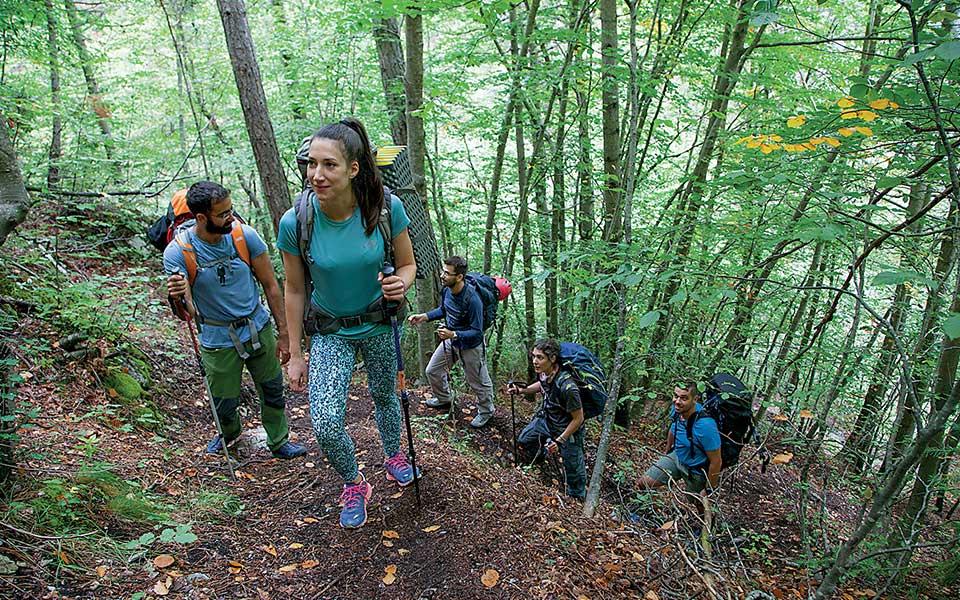
© Olga Charami
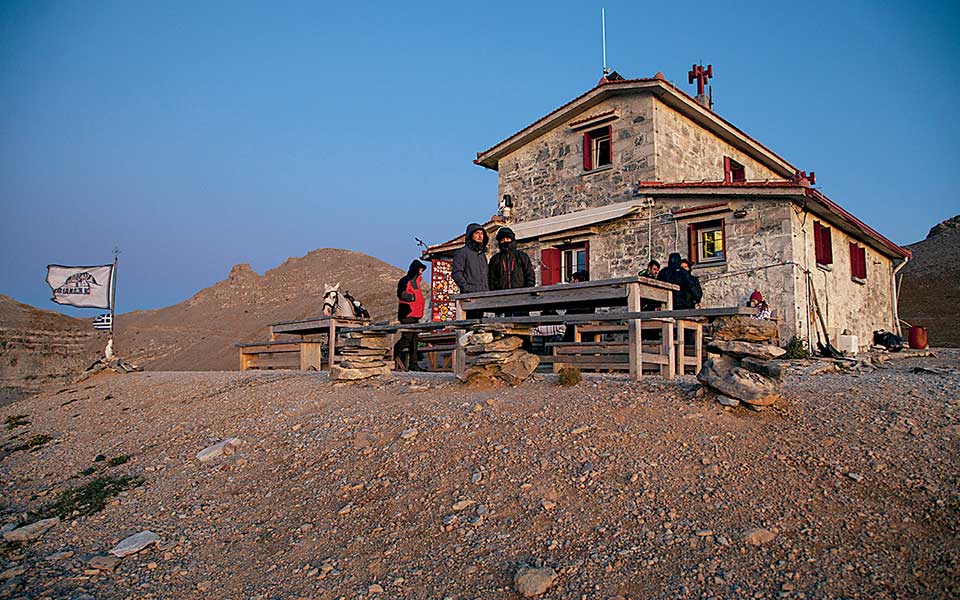
© Olga Charami
It should take around six or seven hours to reach the Plateau of the Muses, where there are two refuges located quite close to one another: the Christos Kakkalos Refuge at 2650m (named after the Litochoro local who scaled Mytikas in 1913) and the Giosos Apostolidis Refuge at 2690m (named after a mountaineer who helped build it, but died three years later from a fall just below the summit).
Both are more than adequate and provide a good base for reaching Mytikas, just over an hour away, across a sheer, 150-meter couloir, or gully, called Louki. A number of accidents have taken place here, almost all as a result of careless climbers dislodging rocks, so caution is advised.
These two ascent routes account for 80 percent of all visitors to Mytikas and the other high summits, and visitor numbers total more than 100,000 a year. But Olympus has more to offer than just these two routes, and there are ways to get away from the madding crowds and find out more about the mountain, too.
The Routes Less Traveled
Starting off from Litochoro again, you can explore Olympus’ southern flank. At 2700m, it’s lower, but it’s also almost empty in terms of people, and has a large plateau, Bara, at 2500m.
There are no refuges in this area, but there is a good trail that meets up with the E4 at Skolio. Taking the trail towards Thessaly in the west will bring you to the village of Kokkinopilos, past the Christaki Refuge. The journey takes two days, during which you can enjoy quiet, empty expanses and secluded peaks, although thorough preparation is required.
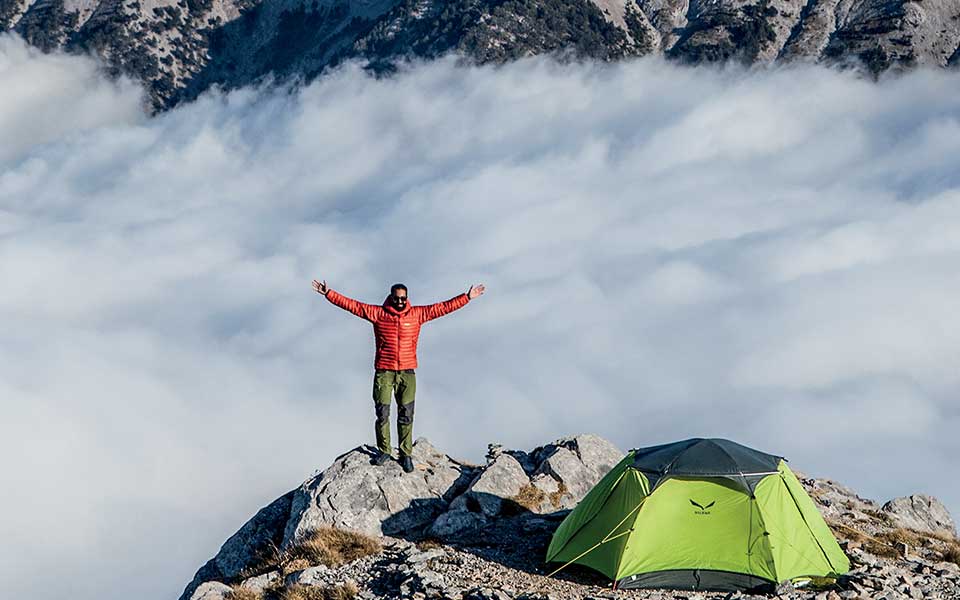
© Olga Charami
The mountain’s northeastern and northern faces, shooting up 300m from the valley, are also good ways to explore a different side of Olympus. Starting at the Krevatia Refuge just above the village of Vrontou, there’s a trail that leads to the impressive Xerolaki Gorge. From there, a narrow rocky pass takes you up to Kazania, a cavity beneath the peaks that is all rocks and boulders, shaped by a glacier that stood here 10,000 years ago. This is by far the most fascinating route for reaching the Plateau of the Muses and the summits.
But there’s much more to Olympus than reaching a summit. There is a very good network of trails above the villages of Vrontou and Dion, and you can spend days exploring here. Paths take you through woodlands to natural springs and to the three refuges operating in the area, all at more comfortable altitude not exceeding 2000 m. This is an approach to exploring the area that’s been gaining in popularity in recent years.
Whichever experience you choose (and there are many more than those described here), Olympus is an enchanting mountain. I have been trekking its slopes for 30 years, and every time is magical.

